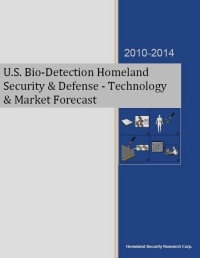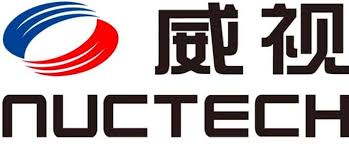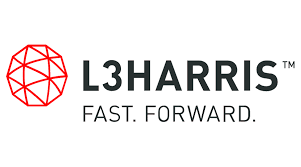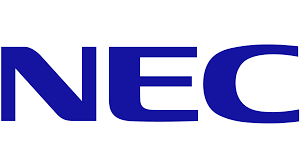| 1. |
Scope |
| 1.1. |
Definition of Biological Terrorism |
| 1.2. |
Scope |
| 1.2.1. |
Bio Weapon Types |
| 1.3. |
Basic Assumptions |
| 1.3.1. |
General |
| 1.3.2. |
Why Conduct Constant Surveillance for Biological Warfare Threats? |
| 1.3.3. |
Possible Scenario Analysis |
| 1.4. |
Methodology |
| 1.4.1. |
Research Methods |
| 1.4.2. |
Report Structure |
| 1.5. |
Who is This Report For? |
| 2. |
Executive Summary |
| 2.1. |
Main Conclusions |
| 2.2. |
The Threat of Bioterrorism |
| 2.3. |
How Real Is The Bioterrorism Threat? |
| 2.4. |
Defending Against Bioterrorism |
| 2.4.1. |
Project BioWatch |
| 2.4.2. |
Project BioSense |
| 2.4.3. |
Project BioShield |
| 2.5. |
Bio-Detection The Industry |
| 2.6. |
Bio-Detection Market Forecast 2010-2014 |
| 2.6.1. |
Total Bio-Detection Systems and Service Market Forecast 2010-2014 |
| 2.6.2. |
Bio-Detection Systems & Service Market Forecast by Modality 2010-2014 |
| 2.6.3. |
Bio-Detection Market Forecast by Technology Generation 2010-2014 |
| 2.7. |
Bio-Detection Next Generation Business Opportunities |
| 2.8. |
Bio-Detection Technologies Outlook |
| 3. |
Bio-Detection Market Drivers |
| 4. |
Bio-Detection Market Inhibitors |
| 5. |
The Obama Administration Bio Terror Mitigation Strategy |
| 5.1. |
Bio-Defense Funding |
| 5.1.1. |
DHHS Bio-Defense Missions and Funding |
| 5.1.2. |
DHS Bio-Defense Missions and Funding |
| 5.1.3. |
DOD Bio-Defense Missions and Funding |
| 5.1.4. |
DOA Bio-Defense Missions and Funding |
| 5.1.5. |
EPA Bio-Defense Missions and Funding |
| 5.1.6. |
Other Bio-Defense Missions and Funding |
| 5.2. |
The Obama Administration Bio-Defense Strategy |
| 6. |
Bio-Detection Technologies Overview |
| 6.1. |
Bio-Detection Technology Challenges |
| 6.1.1. |
Sampling the Environment |
| 6.2. |
The Bio-Detection Process |
| 6.2.1. |
Bio-Detectors in a Multitude of Ambient Settings |
| 6.2.2. |
Bio-Detection Triggering |
| 6.2.3. |
Collection of Particles |
| 6.2.4. |
Bio-Particle Detectors |
| 6.2.5. |
Bio-Agent Identification |
| 7. |
Bio-Detection Technological Challenges |
| 7.1. |
Challenge 1 Detection of Small Particle Concentration |
| 7.2. |
Challenge 2 Eliminating Bio Background |
| 7.3. |
Challenge 3 Expensive Reagents |
| 7.4. |
Challenge 4 Expensive Equipment Maintenance |
| 7.5. |
Challenge 5 Adapting Equipment to Changing Environments |
| 7.6. |
Challenge 6 Dealing With Emerging Threats |
| 8. |
Bio Detection Technologies Review & Outlook 2010-2014 |
| 8.1. |
Bio-Detection Core Technologies Comparison |
| 8.2. |
Collector/Concentrator Core Technologies |
| 8.3. |
Cyclone Collectors |
| 8.4. |
Variable Particle-Size Impactor |
| 8.5. |
Virtual Impactors |
| 8.6. |
Impingers |
| 8.7. |
Reagentless Trigger Core Technologies |
| 8.7.1. |
Flow Cytometry |
| 8.7.2. |
Particle Sizing |
| 8.7.3. |
Gas Chromatography |
| 8.7.4. |
Trigger Technologies Drivers |
| 8.7.5. |
Trigger Technologies Inhibitors |
| 8.8. |
DNA Based Diagnostic Core Technologies |
| 8.8.1. |
Overview of DNA-Based Detection |
| 8.8.2. |
Polymerase Chain Reaction (PCR) |
| 8.8.3. |
DNA / RNA Microarrays |
| 8.8.4. |
DNA Technology Drivers |
| 8.8.5. |
DNA Technology Inhibitors |
| 8.9. |
Antibody-Antigen Diagnostic Core Technologies |
| 8.9.1. |
Overview of Antibody-Antigen Reaction |
| 8.9.2. |
Hand-Held Immuno-Chromatographic Assays (HHA) |
| 8.9.3. |
Magnetic Microbead-Base Assays |
| 8.9.4. |
Microfluidic Devices “Lab on a Chip” |
| 8.9.5. |
Fluorescence Imaging |
| 8.9.6. |
Electrochemical-Luminescence (ECL) |
| 8.9.7. |
Antibody/Antigen Technology Drivers |
| 8.9.8. |
Antibody/Antigen Technology Inhibitors |
| 8.1. |
Signal Analysis Algorithms |
| 8.10.1. |
Clustering / Classifier Algorithms |
| 8.10.2. |
Image Analysis Algorithms |
| 8.10.3. |
Decision Algorithms |
| 8.10.4. |
Algorithm Drivers |
| 8.10.5. |
Algorithm Inhibitors |
| 8.11. |
Rapid Microbiological Technologies |
| 9. |
Biological Detection Overview by Application |
| 9.1.1. |
Application 1 Emergency Responder Hand-Held Detectors |
| 9.1.2. |
Application 2 Emergency Responder Mobile Labs |
| 9.1.3. |
Application 3 Indoor Standoff Detectors |
| 9.1.4. |
Application 4 Outdoor Standoff Detectors |
| 10. |
U.S. Bio-Detection Systems Market Outlook 2010-2014 |
| 10.1. |
Scope, Assumptions and Overview |
| 10.1.1. |
Scope |
| 10.2. |
Bio-Detection Systems Revenue Sales Forecast 2010-2014 |
| 10.2.1. |
Bio-Detection Systems Revenue Sales by Generation Forecast 2010-2014 |
| 10.2.2. |
Bio-Detection Systems Sales by Modality Forecast 2010-2014 |
| 10.3. |
Bio-Detection Systems Quantity Sales Forecast 2010-2014 |
| 10.3.1. |
Bio-Detection Systems Quantity Sales by Generation Forecast 2010-2014 |
| 10.3.2. |
Bio-Detection Systems Quantity Sales by Modality Forecast 2010-2014 |
| 10.4. |
Bio-Detection Systems Installed Base Forecast 2010-2014 |
| 10.4.1. |
Bio-Detection Systems Installed Base by Generation Forecast 2010-2014 |
| 10.4.2. |
Bio-Detection Systems Installed Base by Modality Forecast 2010-2014 |
| 10.5. |
Bio-Detection Outdoor Standoff-Detection Systems Market Forecast 2010-2014 |
| 10.5.1. |
Outdoor Standoff Detection Systems Revenue Sales Outlook 2010-2014 |
| 10.5.2. |
Outdoor Standoff Detection Systems Quantity Sales Outlook 2010-2014 |
| 10.5.3. |
Outdoor Standoff Detection Systems Installed Base Outlook 2010-2014 |
| 10.6. |
Bio-Detection Indoor Systems Standoff-Detection Market Forecast 2010-2014 |
| 10.6.1. |
Indoor Standoff Systems Detection Sales Outlook 2010-2014 |
| 10.6.2. |
Indoor Standoff Detection Systems Unit Sales Outlook 2010-2014 |
| 10.6.3. |
Indoor Standoff Detection Systems Installed Base 2010-2014 |
| 10.7. |
Bio-Detection Point-Detection (Detect-to-Treat) Systems – Installed Base Forecast 2010-2014 |
| 10.7.1. |
Point-Detection Summary Overview |
| 10.8. |
Bio-Detection First Responder Hand-Held Detection Systems Market Forecast 2010-2014 |
| 10.8.1. |
First Responder Hand-Held Detection Systems Sales Outlook 2010-2014 |
| 10.8.2. |
First Responder Hand-Held Detection Systems Quantity Sales Outlook 2010-2014 |
| 10.8.3. |
First Responder Hand-Held Detection Systems Installed Base 2010-2014 |
| 10.9. |
Bio-Detection First Responder Mobile Labs Detection Systems Market Forecast 2010-2014 |
| 10.9.1. |
First Responder Mobile Labs Sales Outlook 2010-2014 |
| 10.9.2. |
First Responder Mobile Labs Quantity Sales Outlook 2010-2014 |
| 10.9.3. |
First Responder Mobile Labs Installed Base 2010-2014 |
| 11. |
Bio-Detection Service Business Outlook 2010-2014 |
| 11.1. |
Bio-Detection Service & Upgrade Business Forecast by Modality 2010-2014 |
| 11.2. |
Bio-Detection Service Business Forecast by Technology Generation 2010-2014 |
| 12. |
Bio-Detection Business Opportunities 2010-2014 |
| 12.1. |
Historical Perspective: A Market Waiting for Transition |
| 12.1.1. |
The Current and Future HLS Bio-Defense Strategy for Detection |
| 12.1.2. |
Factors Affecting Biological Detectors Deployment and Technologies 2010-2014 |
| 12.1.3. |
Biological Detection Technology Timeline 1992-2014 |
| 12.2. |
Business Opportunities for Next Generation HLS Bio-Detection Systems |
| 12.2.1. |
Business Opportunity 1 Emerging Threats |
| 12.2.2. |
Business Opportunity 2 Human Sentinel Surveillance System |
| 12.2.3. |
Business Opportunity 3 Animal Sentinel Surveillance System |
| 12.2.4. |
Business Opportunity 4 Biological IC3 Biological Threat Assessment Intelligence Command, Control, and Communication Infrastructure |
| 12.2.5. |
Business Opportunity 5 Reducing False Alarms Lesser False Positives and False Negatives |
| 12.2.6. |
Business Opportunity 6 Reducing Cost Minimizing Use of Non-Reusable Reagents |
| 12.3. |
Outdoor Standoff Biological Detectors |
| 12.3.1. |
Business Opportunity 7 Bioagent Autonomous Networked Detectors (BAND) |
| 12.3.2. |
Business Opportunity 8 Rapid Automated Biological Identification System (RABIS) |
| 12.3.3. |
Business Opportunity 9 First Responder Portable Hand-Held Detector |
| 12.3.4. |
Business Opportunity 10 First Responder Mobile Biological Detection Station |
| 12.3.5. |
Business Opportunity 11 Regional Automatic Detector Outdoor Standoff Detectors |
| 12.3.6. |
Business Opportunity 12 Networked Automatic Detector Indoor Standoff Detectors |
| 12.3.7. |
Business Opportunity 13 External Spread of Bioagent Detection |
| 12.3.8. |
Business Opportunity 14 Internal Spread of Bioagent |
| 12.4. |
Other Bio-Detection Technologies Business Opportunities |
| 12.4.1. |
Business Opportunity 15 “Lab on a Chip” Miniature Detection Devices |
| 12.4.2. |
Business Opportunity 16 Reagentless Specific Detection Assays |
| 12.4.3. |
Business Opportunity 17 Laser Induced Breakdown Spectroscopy (LIBS) |
| 12.4.4. |
Business Opportunity 18 Raman Spectroscopy-based Reagentless Detection |
| 12.5. |
Future Technologies and Systems |
| 13. |
Bio-Defense Federal R&D Funding Opportunities 2010-2014 |
| 13.1. |
Summary & Outlook |
| 13.2. |
Bio-Defense Federal R&D Funding Forecast 2010-2014 |
| 13.2.1. |
DHS Biosecurity R&D |
| 13.2.2. |
DOD Bio-Security R&D |
| 13.2.3. |
DHHS Biosecurity R&D |
| 13.2.4. |
Other Agencies Biosecurity R&D |
| 13.3. |
HLS-HLD Bio-Detection R&D Funding Drivers |
| 13.4. |
HLS-HLD Bio-Detection R&D Funding Opportunities Inhibitors |
| 13.5. |
DHS Biological Detection HLS Technologies R&D Programs |
| 13.5.1. |
Surveillance and Detection R&D |
| 13.5.2. |
Rapid Development for Sensors for Novel Threat Agents |
| 13.5.3. |
Cross Correlation of Environmental Biological Sensors and Human Illness |
| 13.5.4. |
Facility Airborne Biological Toxin Alarm System (FABTAS) |
| 13.5.5. |
Field-Deployable Detection Technology for the Identification of Biological Toxins |
| 13.5.6. |
Forensics |
| 13.6. |
DARPA (DOD) Biological Detection HLS Technologies R&D Programs |
| 13.6.1. |
Handheld Isothermal Silver Standard Sensor (HISSS) |
| 13.6.2. |
Triangulation Identification for Genetic Evaluation of Biological Risk (TIGER) |
| 13.6.3. |
Spectral Sensing of Bio-Aerosols (SSBA) |
| 13.6.4. |
Threat Agent Cloud Tactical Intercept Countermeasure (TACTIC) |
| 13.6.5. |
Immune Buildings |
| 13.7. |
CBDP (DOD) Biological Detection HLS Technologies R&D Programs |
| 13.7.1. |
Project CB1 Biological Defense (Basic Research) Detection |
| 13.7.2. |
Project CB2 Biological Defense (Applied Research) Detection |
| 13.7.3. |
Project CB3 Biological Defense (ATD) Detection |
| 13.7.4. |
Project CA5 Contamination Avoidance (SDD) |
| 13.8. |
TSWG Biological Detection HLS Technologies R&D Programs |
| 13.8.1. |
Real-Time Biological Aerosol Detection |
| 14. |
Bio-Detection Pricing Outlook 2010-2014 |
| 15. |
Bio-Detection Economic Considerations |
| 15.1. |
Overview |
| 15.2. |
Economical Analysis Assumptions |
| 15.2.1. |
Bio-Detection Economic Analysis |
| 15.2.2. |
Cost of Equipment Ownership |
| 15.2.3. |
Cost of Personnel/Year |
| 15.2.4. |
Cost of Test |
| 16. |
Bio-Detection Personnel Considerations |
| 16.1. |
Background Personnel |
| 16.2. |
Personnel Training |
| 17. |
Bio-Detection Vendors and Products |
| 17.1. |
Bio Detection Samplers and Products |
| 17.2. |
Bio Detection Kits Vendors and Products |
| 17.3. |
Bio Detection Screening Devices Vendors and Products |
| 18. |
Appendix A: The Threat of Bioterror |
| 18.1. |
Use of Bioweapons Historical Perspective |
| 18.2. |
Biological Terror Bacterial Agents |
| 18.2.1. |
Anthrax |
| 18.2.2. |
Cholera |
| 18.2.3. |
Plague |
| 18.2.4. |
Tularemia |
| 18.3. |
Biological Terror Viral Agents |
| 18.3.1. |
Smallpox |
| 18.3.2. |
Hemorrhagic Fever Viruses |
| 18.3.3. |
Venezuelan Equine Encephalitis |
| 18.4. |
Biological Terror Rickettsiae Agents |
| 18.4.1. |
Q Fever |
| 18.4.2. |
Typhus |
| 18.5. |
Biological Terror Toxins |
| 18.5.1. |
Botulinum Toxin |
| 18.5.2. |
Ricin |
| 18.5.3. |
Saxitoxin |
| 18.5.4. |
Staphylococcal Enterotoxin B (SEB) |
| 19. |
Appendix B: Bio-Detection Patent Review |
| 19.1. |
Scope |
| 19.2. |
Bio-Detection Patents |
| 20. |
Appendix C: Legal Issues |
| 20.1. |
International / European Legislation / Agreements |
| 20.1.1. |
The Biological and Toxin Weapons Convention (BTWC) 1972 |
| 20.2. |
U.S. Bioterrorism Legislation |




















